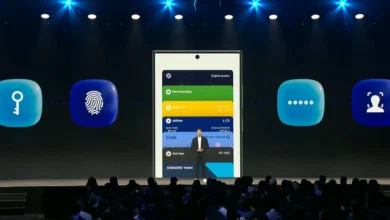Safeguarding Kids in 2024: Unveiling Cybersecurity Threats and Protective Measures
Navigating the Digital Realm: A Parent's Guide to Securing Children Against Emerging Cyber Risks

As technology integrates further into the lives of children, the spectrum of cybersecurity threats expands. In 2024, the landscape is rife with challenges, from the subtle perils of artificial intelligence to the insidious world of fake clone apps. Here’s a glimpse into the key threats and strategies to shield the young generation from online dangers.
Key Cybersecurity Threats Unveiled
Use of AI
A UN research report reveals that a staggering 80% of young people engage with AI daily. Behind seemingly innocuous applications lies the potential for harm. Apps offering modified photos may seem harmless, but the databases they feed into remain unpredictable. Parents must be vigilant, as chatbots within AI apps can deliver age-inappropriate content at the tap of a button.
Malicious Actors Target Young Gamers
The rise of unmoderated voice and text chats in games has become a breeding ground for cybercriminals. Exploiting the trust of young gamers, threat actors promise gifts and friendships, leading to the compromise of personal information. Phishing links in these chats, often disguised as game mods, pose a severe risk to the unsuspecting, downloading malicious files onto their devices.
Threat from FinTech for Kids
With banks offering specialized products for children, including banking cards for those as young as 12, financial threat actors find new targets. Children, enticed by promises of free gaming consoles, unwittingly expose themselves to scams by entering card details on phishing sites. Cybercriminals leverage social engineering, posing as peers to solicit sensitive information or request money transfers.
Home Threat Cases Targeting Children on the Rise
Despite the surge in threats to smart home devices, manufacturers lag in developing preemptive cyber-immune tech. Children become potential tools for cybercriminals, with smart devices turned into surveillance tools. Alone at home, children may unwittingly share sensitive information through compromised devices.
Threat from Fake Clone Apps
As legislators crack down on apps deemed security threats, users, especially children, turn to alternatives. Fake clone apps, often posing as game mods or social media versions, proliferate. The Google Play store alone hosted 190 trojan-infected apps between 2020 and 2022, a conservative estimate suggesting 4.8 million downloads. The actual number of victims may be higher, underscoring the substantial threat to young users.
Securing Kids in the Digital Age
Researchers advocate a proactive approach to cybersecurity for children:
- Stay Informed and Monitor: Parents must stay informed about potential threats and actively monitor their children’s online activities.
- Open Communication: Establish open communication with children about potential online risks and enforce strict guidelines for their safety.
- Install Security Solutions: Ensure the installation of trusted security solutions on children’s devices to prevent malicious file downloads during gaming experiences.
- Active Monitoring of Financial and Download Activities: Parents should actively monitor their children’s financial and download activities to prevent falling prey to phishing attacks or downloading malicious apps.
In a world where the digital and physical intertwine, safeguarding children online requires diligence and awareness from parents. The battle against cybersecurity threats is ongoing, and the key lies in proactive measures to secure the digital future of the younger generation.



